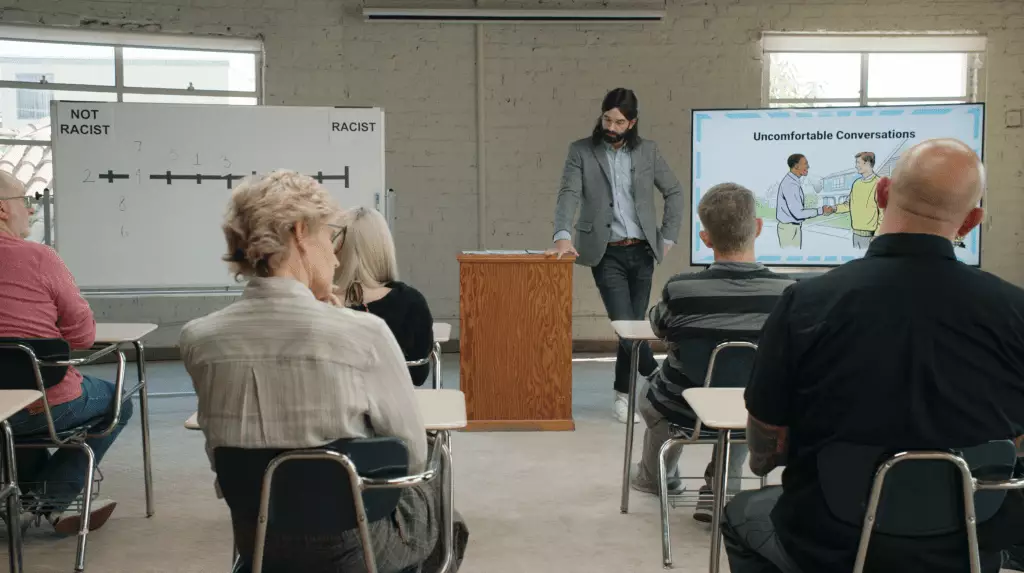The domestic box office has recently witnessed an intriguing mix of films appealing to conservative and faith-based audiences. Topping the charts this weekend, we saw “Am I Racist?” make a striking entrance at number four with a remarkable opening. Produced by The Daily Wire, it highlights the growing trend of films that challenge contemporary social issues from a distinctly conservative viewpoint. Over the past decade, faith-driven projects have steadily gained traction, and this film marks another significant milestone in that narrative.
“Am I Racist?” may be the first theatrical venture from the prolific duo Jeremy Boreing and Ben Shapiro, but it certainly did not shy away from making an impact. Grossing an impressive $4.75 million across 1,517 screens, it stands as one of the most successful documentary launches in recent history. Unlike typical documentary formats, which often revel in understated releases, this film has sparked debates that resonate with its target demographic, showcasing its appeal among conservative viewers dissatisfied with the mainstream narrative on diversity, equity, and inclusion (DEI).
The film takes a satirical yet critical approach toward DEI practices, a framework that has garnered both support and scrutiny. Through the lens of host Matt Walsh, the audience embarks on a provocative journey that challenges mainstream discourse about race and inclusion. Its approach resonates with a substantial segment of the population that feels alienated by societal shifts regarding equity and the emphasis on diversity.
In light of its box office success, “Am I Racist?” garnered an impressive 99% audience score on Rotten Tomatoes based on over 500 ratings, a clear indication of its resonance with viewers. However, the absence of a critics’ score reveals a potential divide between mainstream critics and a substantial portion of the viewing public, suggesting that the gulf between cultural commentary and traditional cinematic analysis is widening.
The demographic data surrounding the film’s audience offers remarkable insights. With a 56% male and 44% female viewer split, alongside a noteworthy statistic that 40% of the audience was under 35, it highlights a younger, engaged demographic interested in tackling polarizing subjects. The Daily Wire’s extensive reach, boasted at 220 million monthly, including a million paying subscribers, indicates an established platform well-positioned to facilitate the distribution of content that aligns with these viewers.
Notably, alongside “Am I Racist?”, the film “God’s Not Dead: In God We Trust” adds another testament to the enduring popularity of faith-based cinema, opening at number ten with $1.46 million. With its narrative focusing on political challenges faced by religious citizens, this fourth sequel reminds audiences of the genre’s capacity to engage with contemporary issues within a theological framework.
Concurrently, the box office welcomed “DAN DA DAN: First Encounter,” an anime film that performed commendably with an estimated $1 million from limited screenings. This marks a pivotal moment for anime, as it demonstrates the shifting landscape where such content is finding favorable footing in theaters, deviating from its traditional release methods. With a 99% audience score on Rotten Tomatoes, it signals a hunger among American viewers for high-quality anime content, further enriching the cultural tapestry of cinema as we know it.
Acting against the backdrop of this trend, “The Critic,” featuring the veteran actor Ian McKellen, offers a more subdued narrative. Despite its limited release, it attracted attention in art house circuits, indicating that even with mainstream box office dynamics favoring larger productions, there remains a loyal audience for nuanced tales told through a more discreet lens.
The current landscape of the box office showcases a dynamic interplay between faith-based films, conservative narratives, and even the burgeoning popularity of anime. With the rise of films that challenge and reflect significant sociocultural issues, it is evident that audiences are eager for content that engages with their values and beliefs.
As a result, the industry may be on the cusp of an evolution where more films tailored to niche demographics see the light of day. “Am I Racist?” serves as a testament to this transition and is indicative of a larger movement towards a diversified cinematic marketplace capable of stimulating meaningful conversations across a broad spectrum of views. With the combination of religious, political, and cultural narratives, it becomes clear that the box office is not solely a battleground for profitability but also a stage for ideological discourse that shapes societal dialogues.

